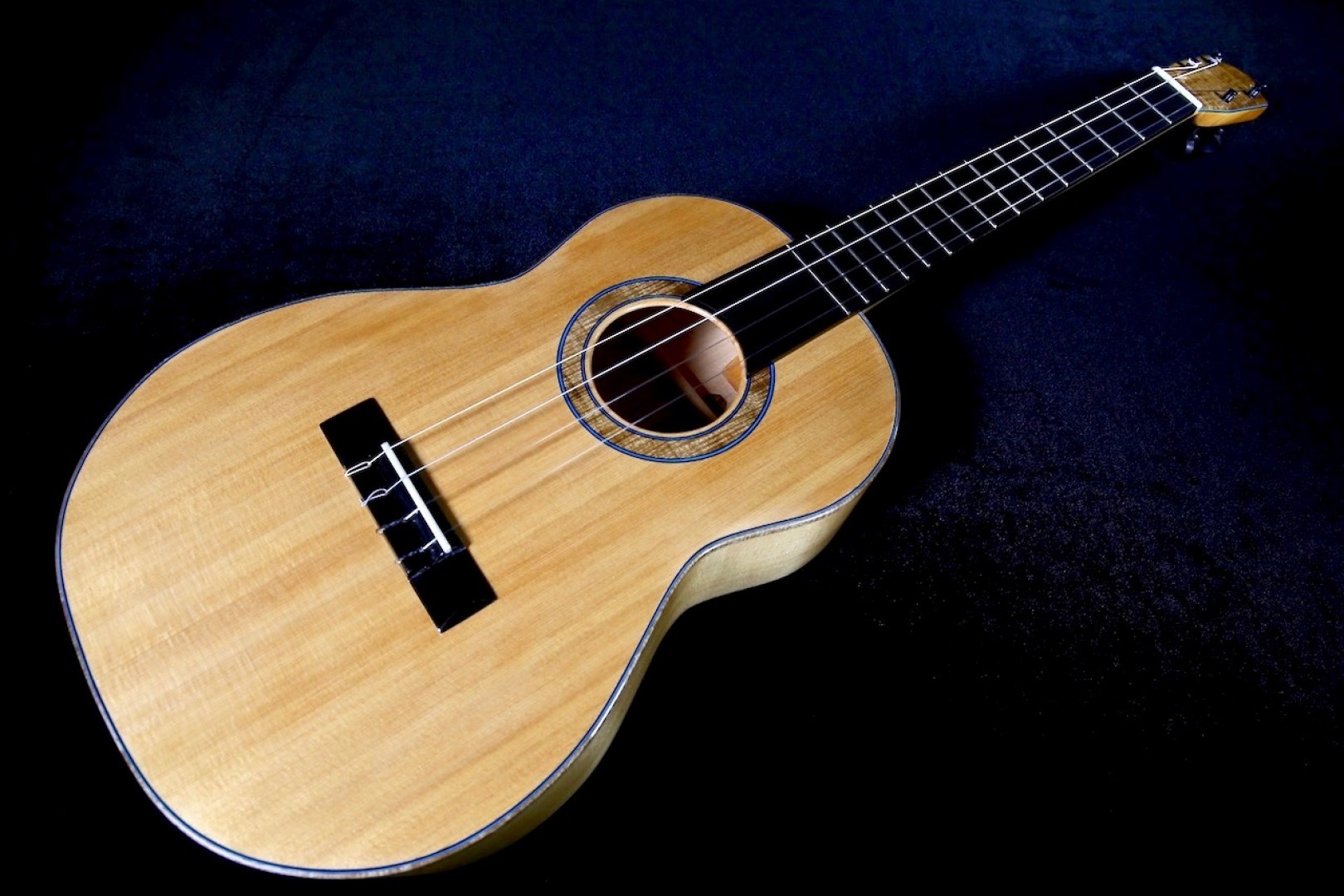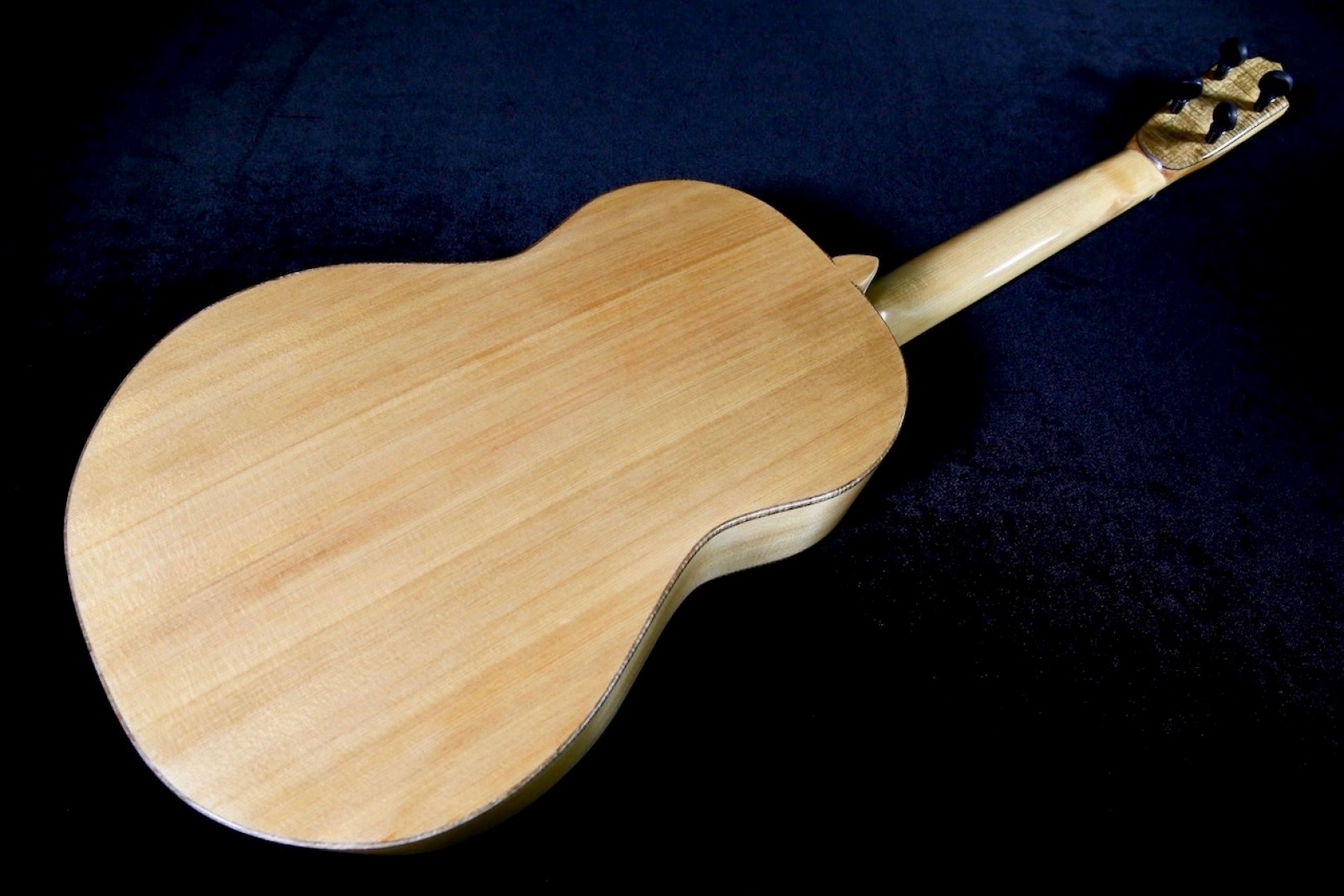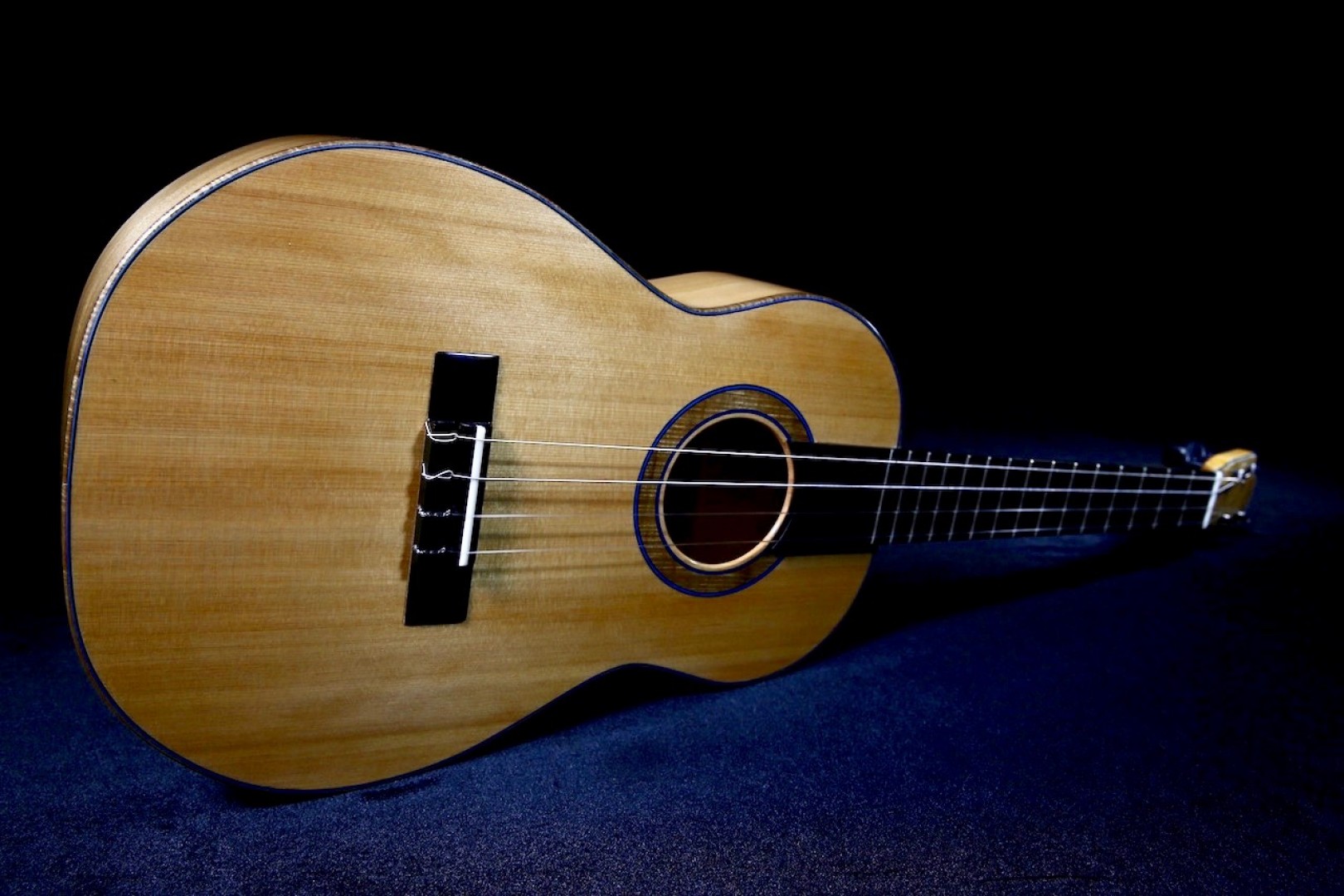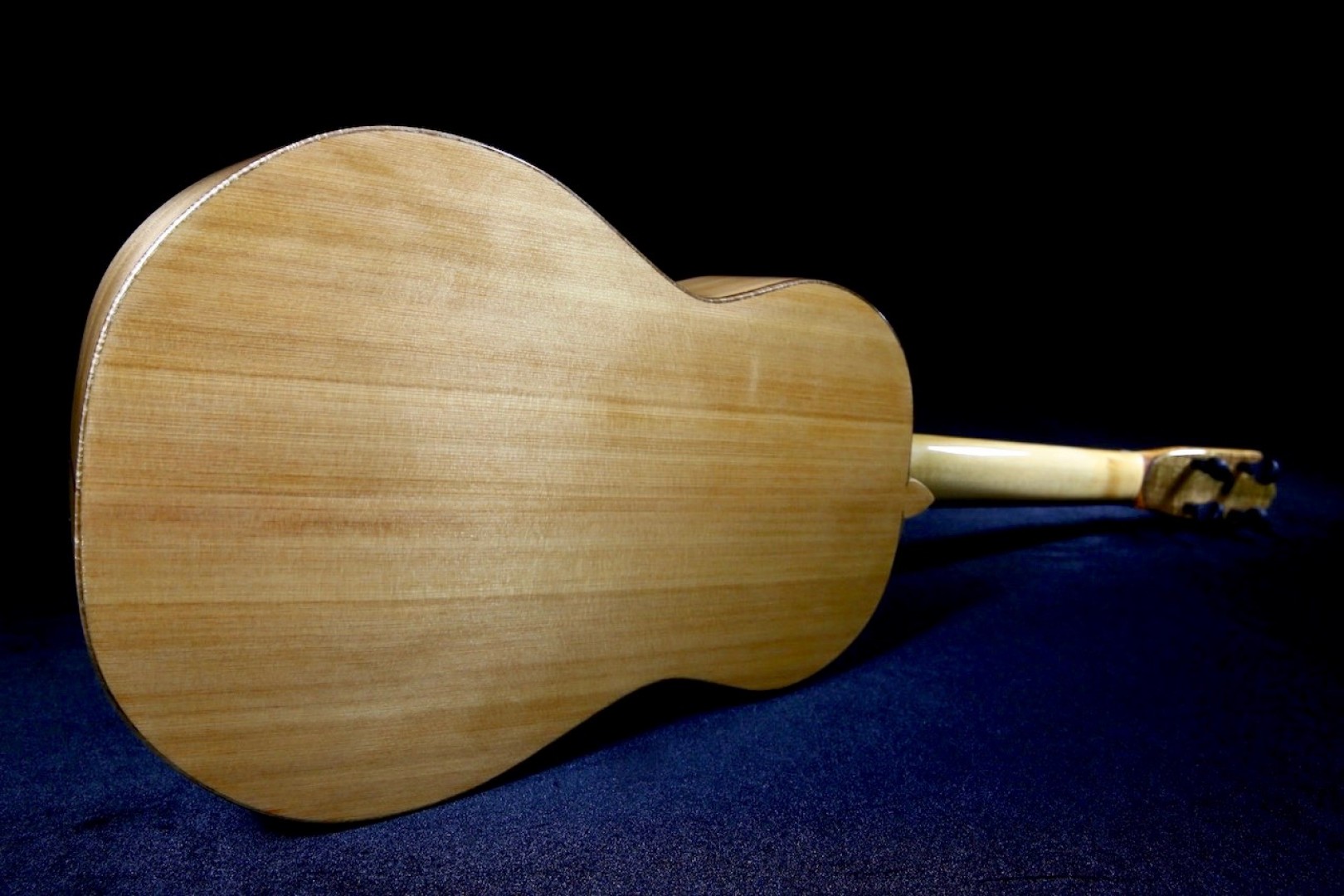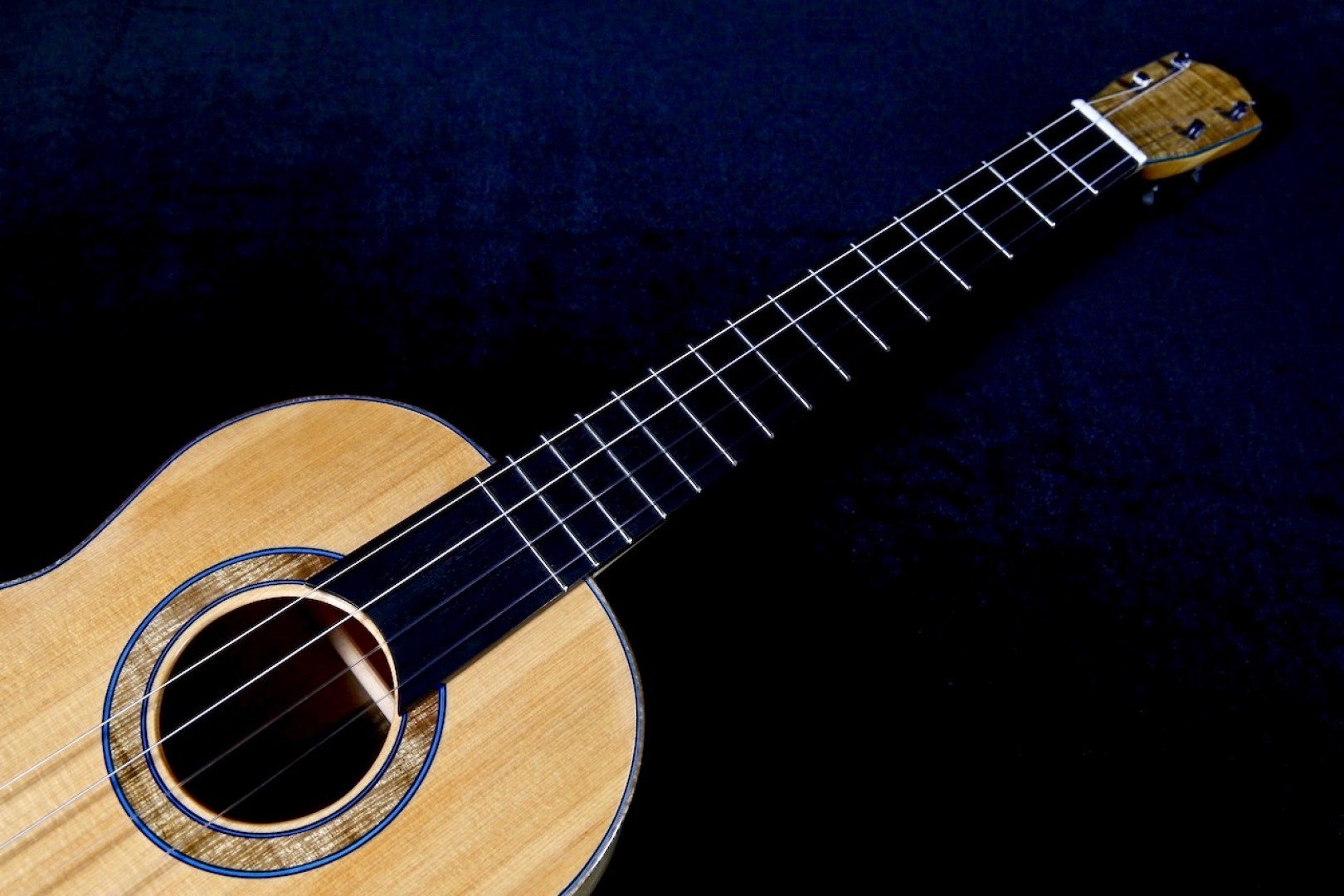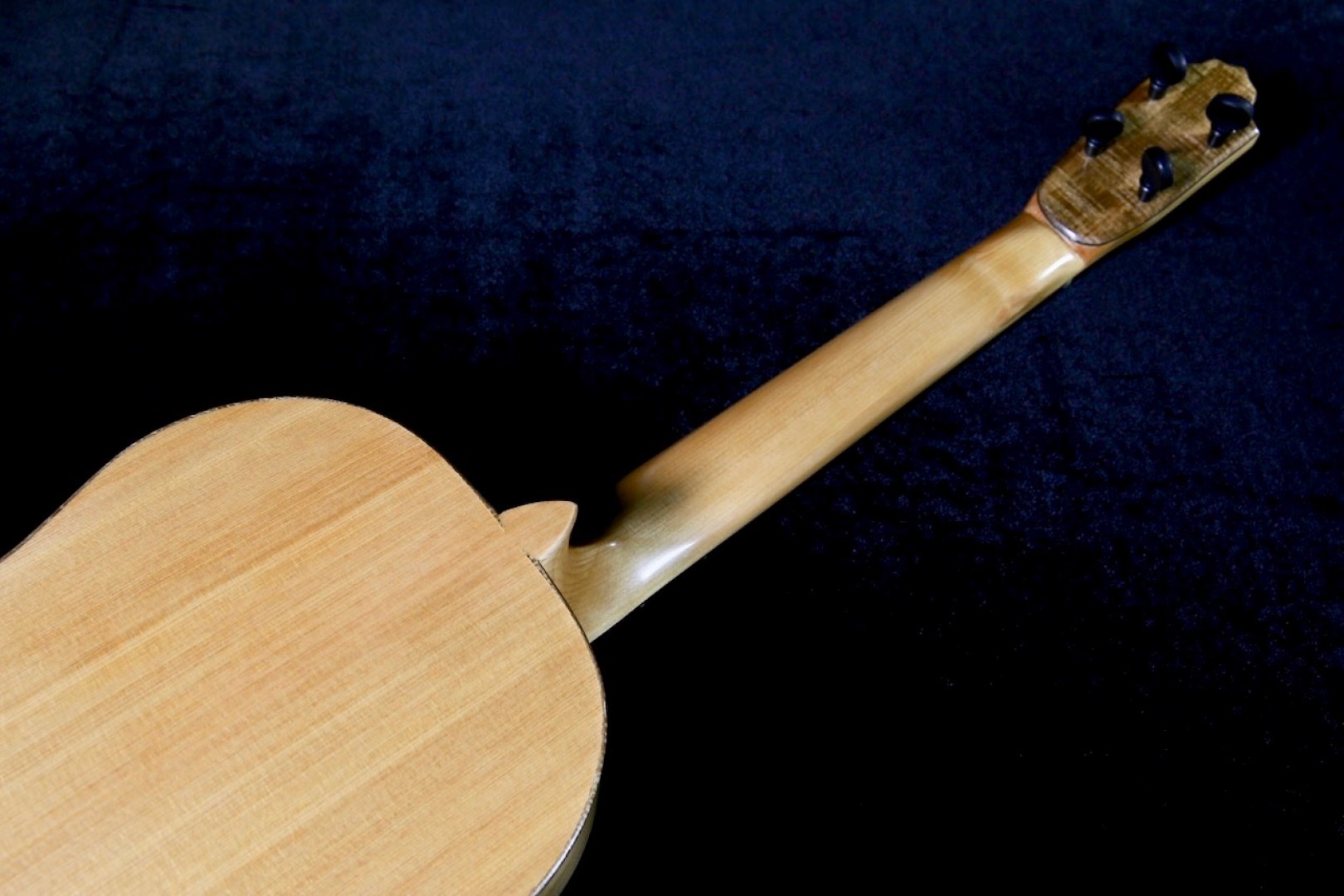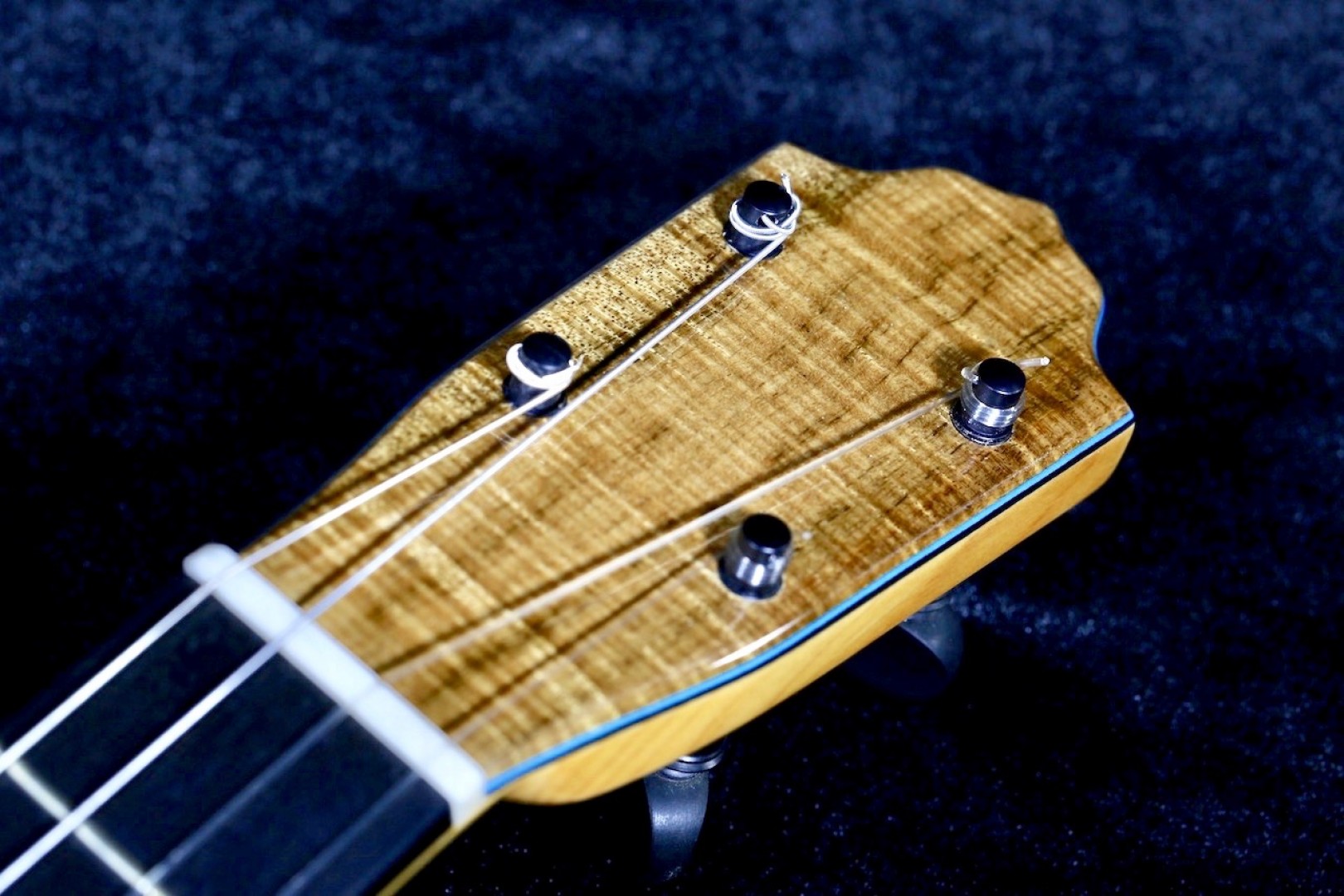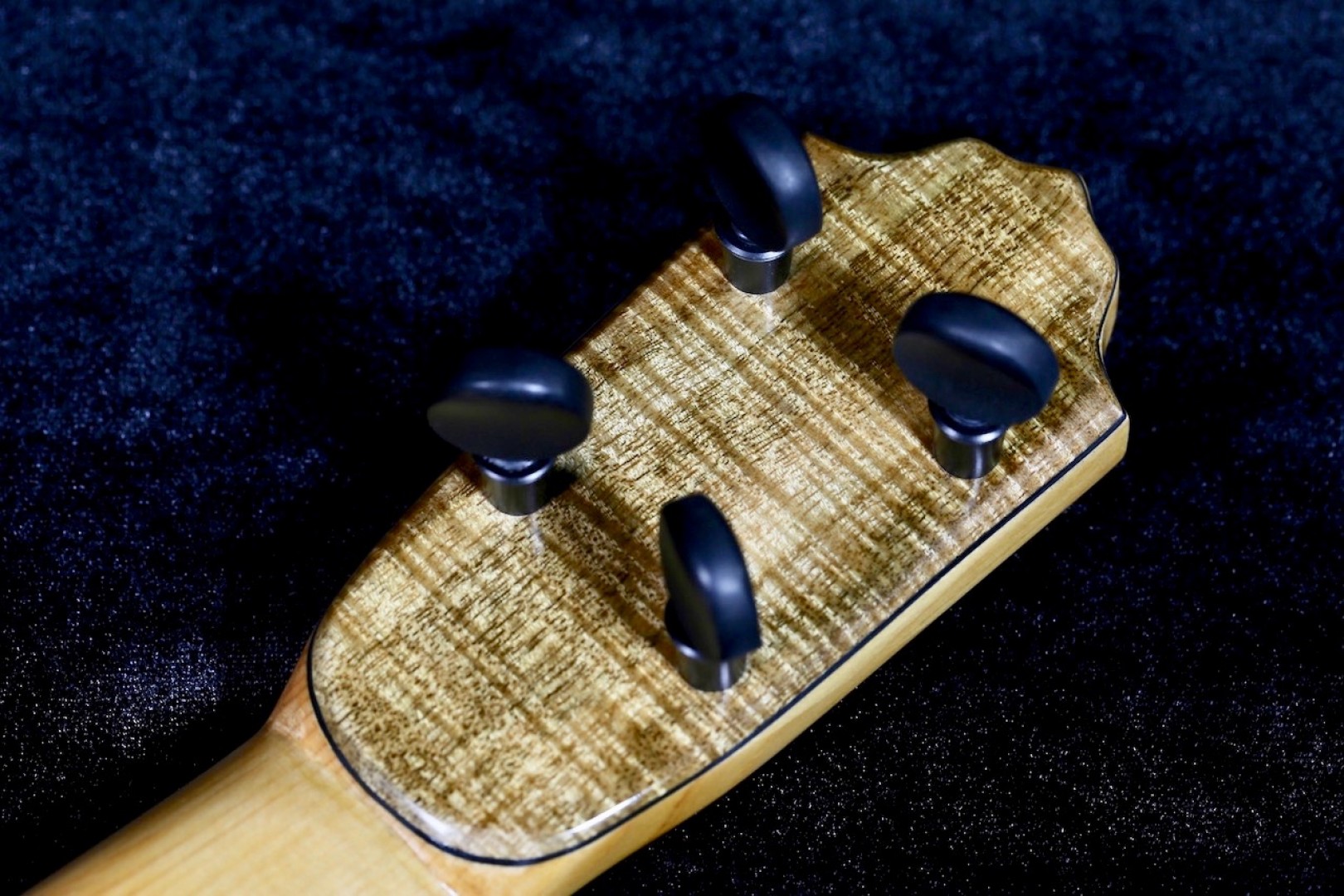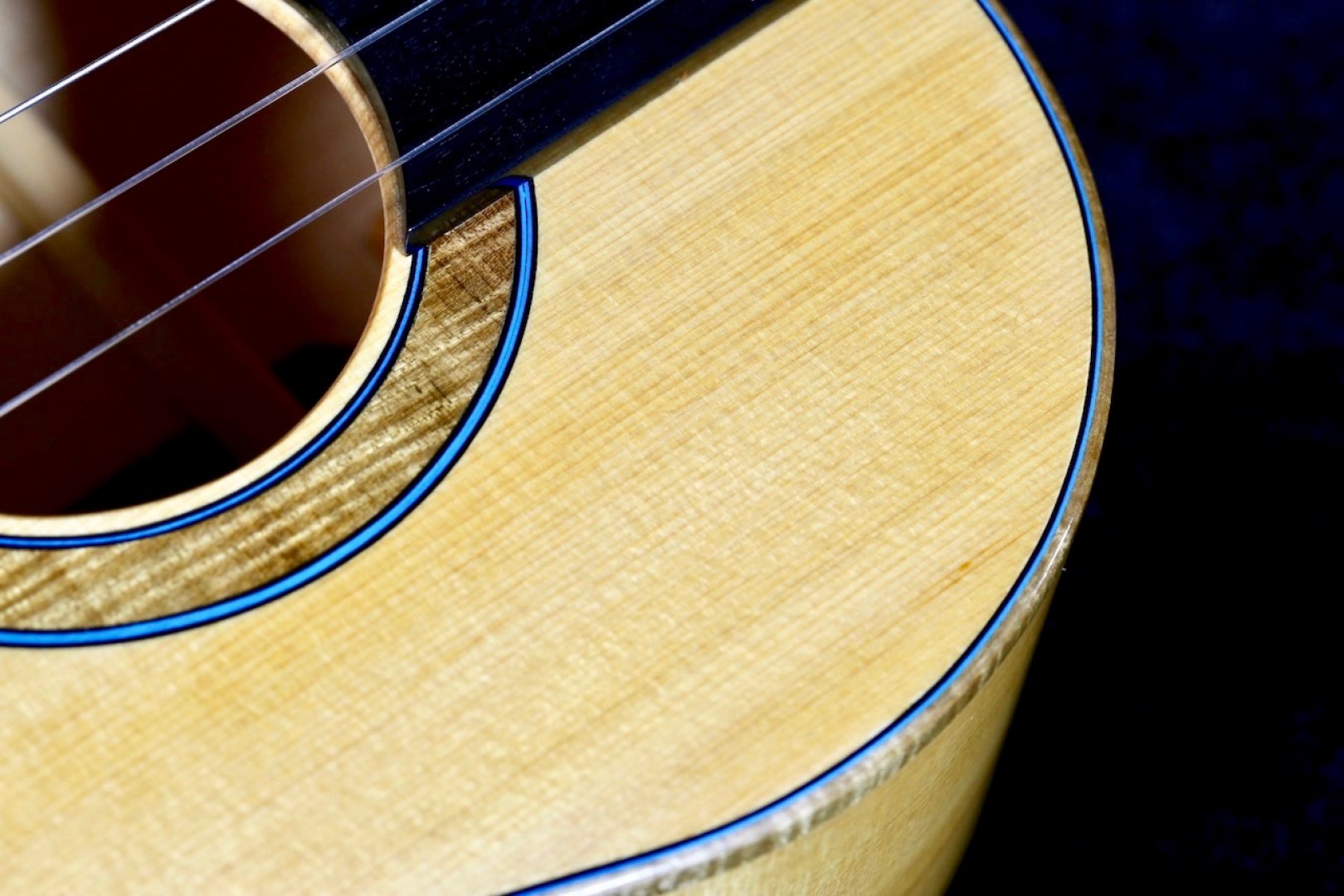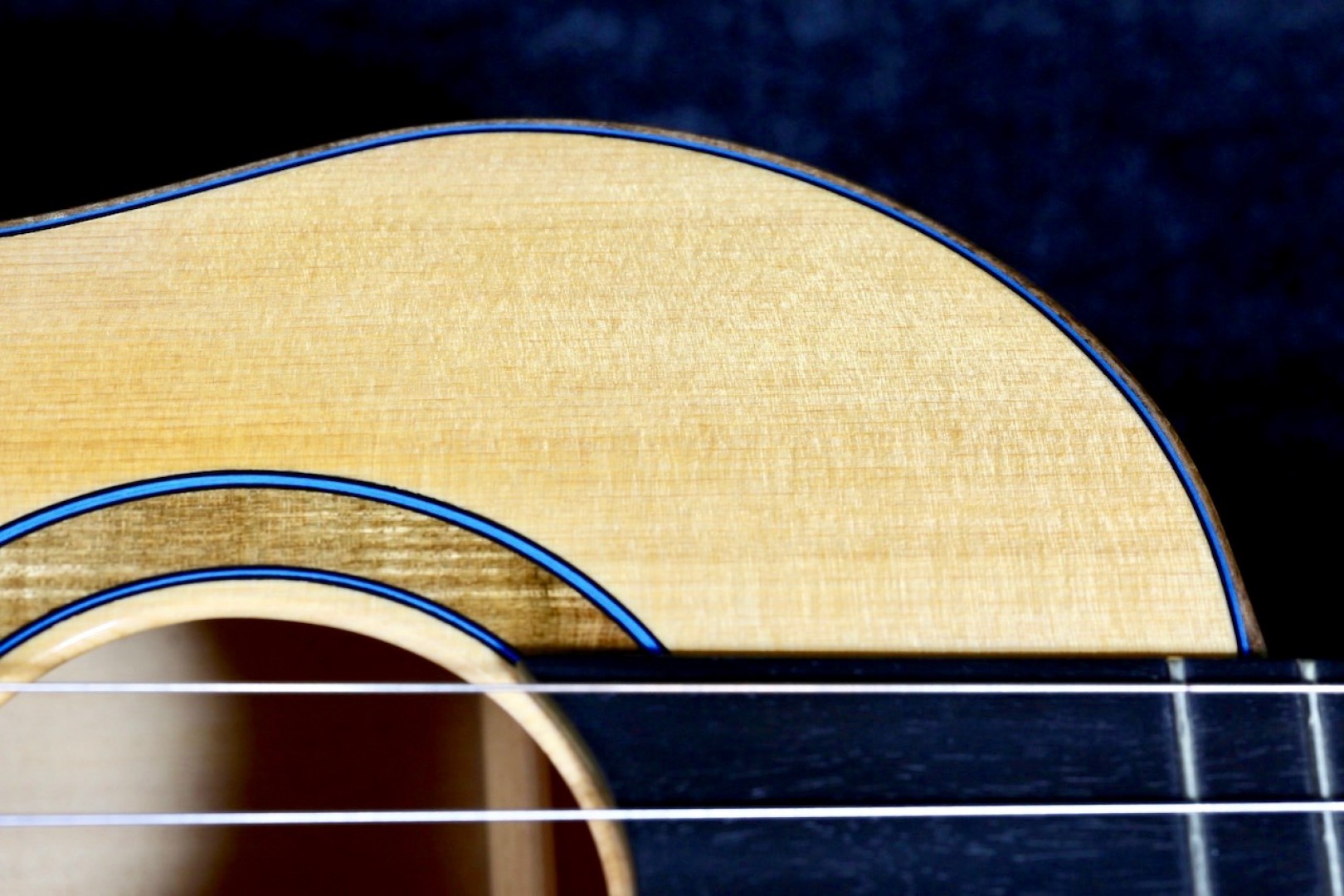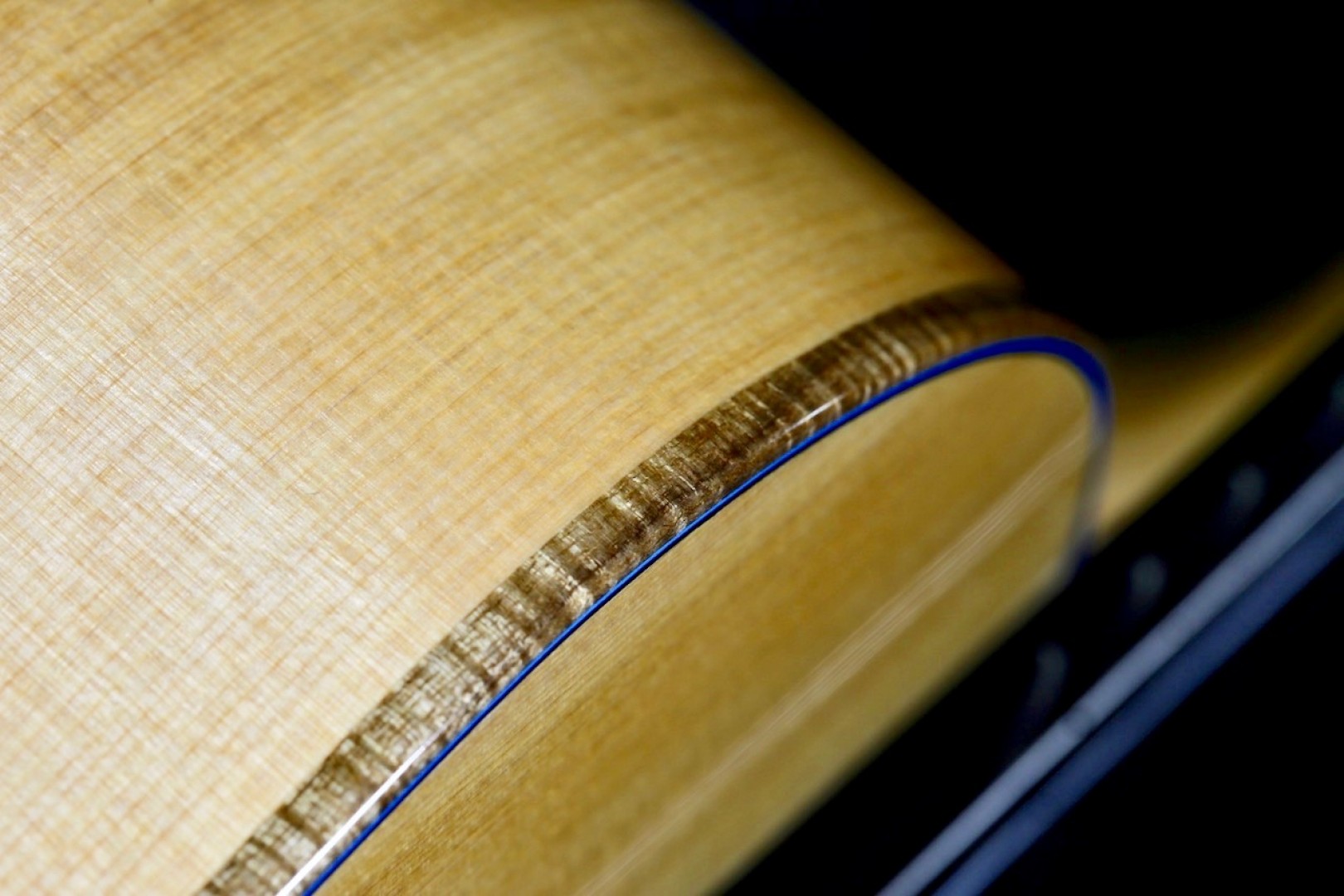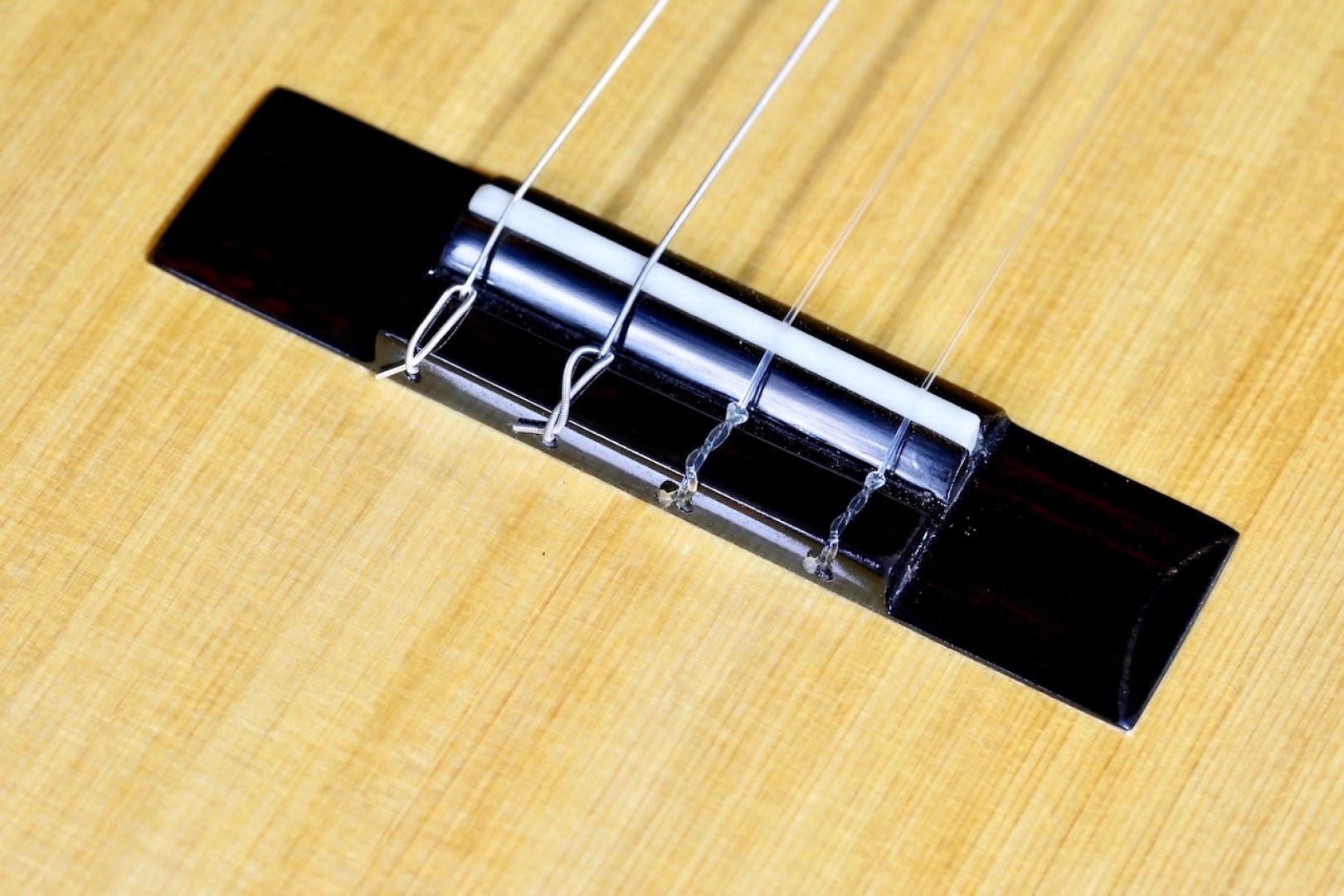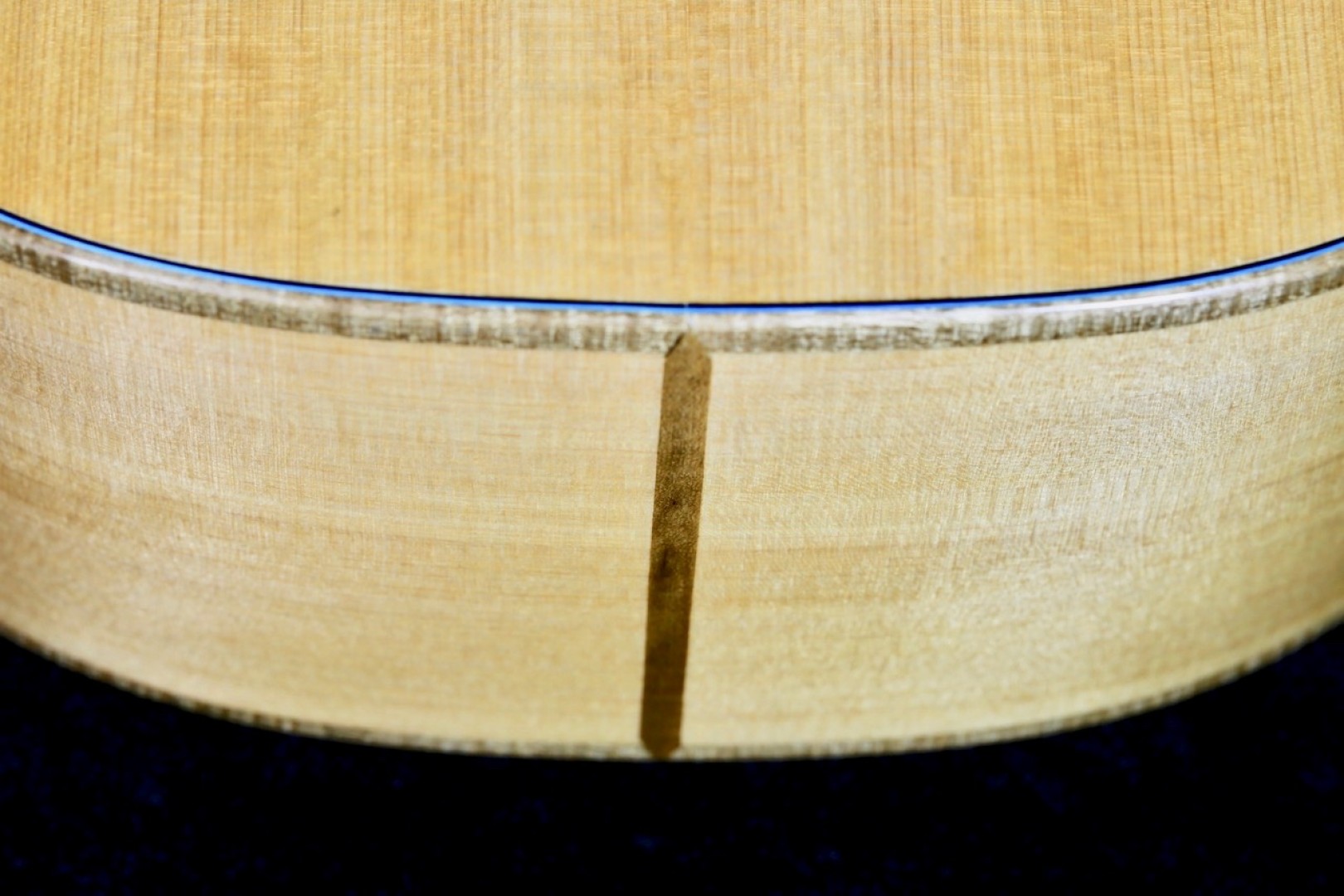Custom Les Stansell Baritone Ukulele
(Circa 2017). Beautiful Les Stansell Baritone Ukulele. Les combines a traditional Spanish Classic design with Port Orford Cedar (Oregon Lawson Cypress) and meticulously handcrafts each instrument with comfort, tone, and aesthetics in mind. Living on the South Oregon Coast, Stansell incorporates the very best this rare wood has to offer in a quest to emulate Spanish classical guitar masters. Stansell Guitars and Ukuleles was profiled in the April 2011 edition of Acoustic Guitar Magazine. His short documentary “A Guitar Makers Path” was also selected and screened at the 2011 Ashland Independent Film Festival and the 2012 Port Townsend Film Festival. Les studied under Anthony Huvard at the Northwest School of Instrument Design in, Seattle, 1978-79, and again with Huvard in Skykomish, Washington, 1981.
This beautiful custom baritone was handcrafted of master grade Oregon Port Orford Cedar top, back, sides, neck, and internal bracing that was salvaged from the 2002 Bisquit Fire – a fire that burned nearly 500,000 acres in the Siskiyou National Forrest in Southern Oregon. Port Orford Cedar is known for its remarkable strength to weight ratio and continues to be used for boat-building as well as decking, railing, and interior paneling in addition to being a superior tone wood for guitars and ukuleles. It grows nowhere in the western hemisphere except in the comparatively small area along the coast of southern Oregon and extreme northern California, forming a strip about 200 miles long and rarely extending more than 40 miles inland. The instrument also boasts a gorgeous Oregon Myrtle wood binding, rosette, and headplates, a musicians grade ebony fingerboard and bridge, bone nut and saddle, professional Peghed geared tuners for precise and smooth tuning, a hand rubbed Shellac finish and a classic Spanish, Flamenco guitar style design.
The principle of a “fretless” above the 15th fret has also been incorporated in to the design of this custom Stansell baritone ukulele and the concept was borrowed from a “Claw-hammer Banjo” design, which lends itself to right hand strumming and often takes place in what many call the sweet spot just above the body and neck joint. This feature gives the player a little more room especially when up-strumming or finger picking – especially on an instrument with low action.
Price: SOLD

